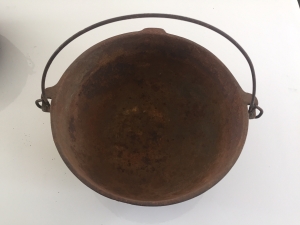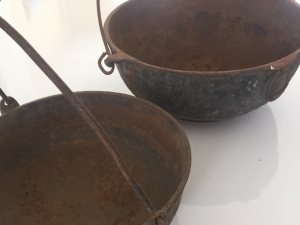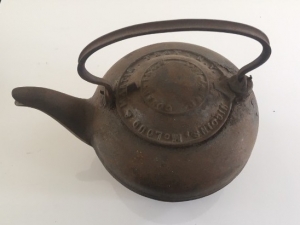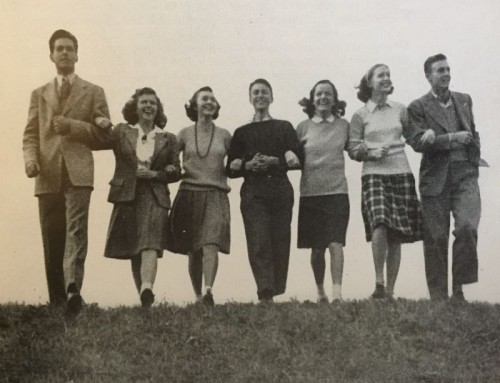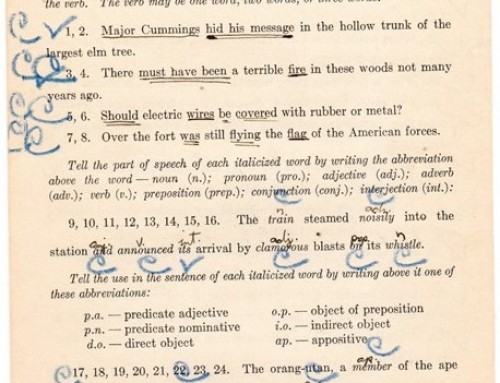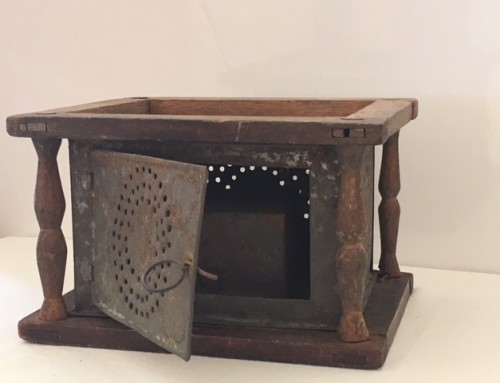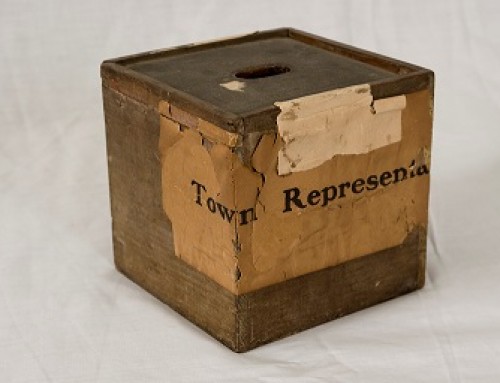Imagine this holiday season preparing food for your family in a large, open hearth. That, of course, is what our forebears did having mastered the art of regulating flames and the heat of hot coals to boil, simmer, roast, saute, and bake. No easy feat!

Kitchen fireplace illustration, The New England Economical Housekeeper, 1845. See the kettle hanging from the crane in the fireplace and the tin oven roasting meat.
Three well-worn kettles or cookpots were found in the basement of the c. 1796 Elihu Emerson house at 332 Main Street. The kettle on the left has three feet so it could perch over a bed of coals on the hearth. It is missing its handle. The kettles on the right were suspended via “S” hooks and trammels from a crane as seen in the illustration above.
Cooks prepared stews in hanging pots, nestled root vegetables in hot ashes, and baked cakes and puddings in Dutch ovens. Cookbooks weren’t prevalent until the 1840s, so hand-me-down recipes and trial and error must have been the order of the day! The following Christmas recipe reveals that standardized measurements definitely were not in use until later.
Recipe for a Christmas Cookey
To three pound flour, sprinkle a tea cup of fine powdered coriander seed, rub in one pound butter, and one and half pound sugar, dissolve three tea spoonfuls of pearl ash in a tea cup of milk, kneed all together well, roll three quarters of an inch thick, and cut or stamp into shape and size you please, bake slowly fifteen or twenty minutes; tho’ hard and dry at first, if put into an earthern pot, and dry cellar, or damp room, they will be finer, softer and better when six months old.
From American Cookery by Amelia Simmons, 1796
Here’s the Christmas Cookey recipe being made at Old Sturbridge Village and cooked in an oven on the hearth.
This early 1860s tea kettle was owned by Mrs. Baxter Newton who lived in the Joseph Emerson house at 316 Main Street. Helping to date the kettle is the embossed lettering on the lid: “Higgins, McLoud & Martin, Troy, N.Y., COVER Pat.D Jan. 1, 1861.”
The commodious kettle has an inset bottom designed to sit into the burner of a wood-burning stove, coal-burning ones not becoming prevalent until after the Civil War.

